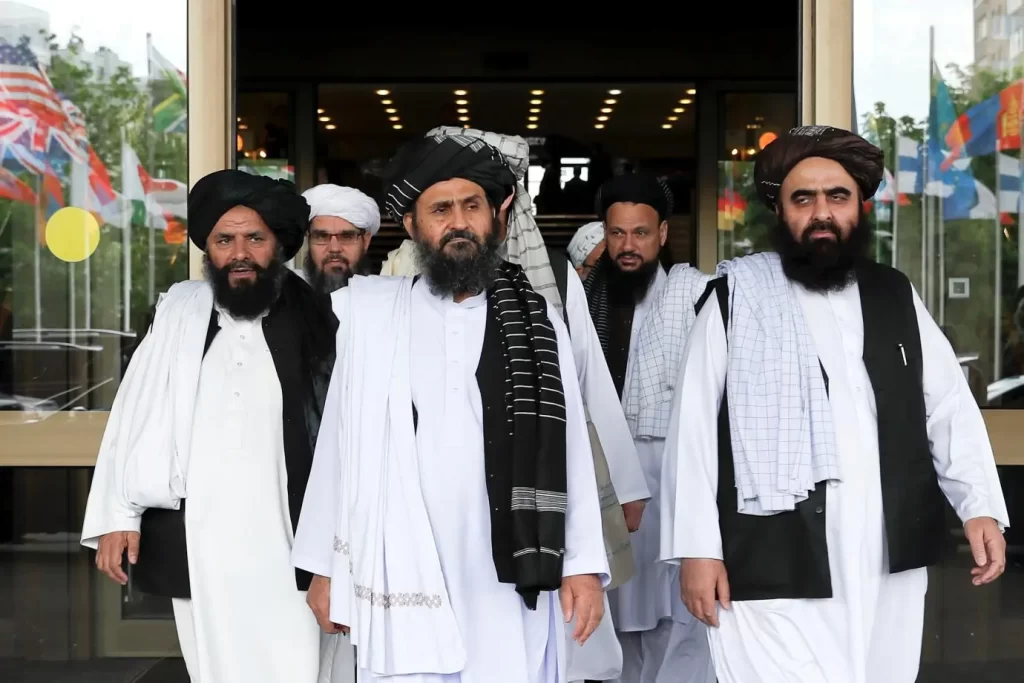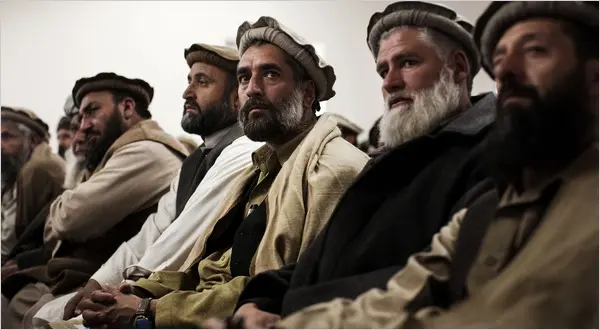Conservative intelligence assessment with a focus on quantity markers, that excludes ethnic and mental background of the people in war zones, explains why the intelligence agencies miscalculated while evaluating and forecasting developments in Afghanistan and Ukraine.
U.S. intelligence agencies are through a large-scale internal review of evaluation methodology for combat capabilities of foreign troops, over the mistakes they’ve made in Ukraine and Afghanistan situation analysis.
The Senate Intelligence Committee sent a letter to the DNI’s office, the Department of Defense, and the CIA, saying that these agencies generally underestimated Ukrainian military in the war against Russia and overestimated Afghan troops in their confrontation against the Taliban. We believe the assessment was wrong as the key markers and the dataset taken for the analysis were wrong. The most important thing here is that the Department of State Bureau of Intelligence and Research was the one to assess the capacity of Ukrainian troops most accurately. That means the accuracy of assessment was mainly affected by data on popular mood, morale, readiness for resistance, and ethnic fabric. It should be noted that the error in evaluating the same markers caused the failure of the Russian invasion in Ukraine.
Analysis and evaluation of data on quantitative advantage of the parties, number of weapons, equipment and manning have led to an error.
The fact that U.S. intelligence agencies have precisely estimated Russian planning before the invasion of Ukraine,suggests that tactics and order of battle provide more predictable course of military operations, but cannot predict their outcome. In Afghanistan, e.g., tactics of the Taliban and the Afghan government troops were known, but useless, as there was no desire or readiness to confront the Taliban.
Value patterns in clan-based and tribal societies
There was an error in the Afghan case while assessing the priority of democracy and freedom for clan-based and tribal societies, as conservatism, traditions and values prevail there. If combined with religion, democracy is often viewed as a threat to traditions and the risk of losing (blurring) customs. The Elders, who would protect the order and curtail external influence, wield authority in clan-tribal societies. That is, the opinion leaders in those communities would support forces that advocate conservatism, as they preserve the power of the Elders,threatened by secular regime. In Libya, e.g., the ISIS managed the areas under control through clans and tribes. With Taliban more focused on Deobandi after 1996, which means cleansing of Hanafi Islam from obsolete local traditions, the role of Elders has shifted to religious leaders affiliated with the Taliban. The general pattern of community functioning remained the same, however.
The Taliban primarily relies on ethnic Pashtuns, the dominant ethnicity in Afghanistan. That is why the Talibs were notstrangers in the country.
Taliban’s anti-colonial views are shared by most people, while those in rural areas (up to 75% of the whole population) associate the Sharia religious practices with order and their perception of ideal government. The Taliban was mostly opposed by urban residents and some ethnic minorities.
Americans set up “forward operating bases” (FOBs) near large settlements, often in the same locations where Soviet garrisons were stationed. The stake on urban control in agrarian Afghanistan and work with intellectuals was a purely mathematical error when assessing settlement pattern in the country, with differences between rural and urban Afghanistan neglected.
Intelligence agencies have failed to give due consideration to the value of culture and ideology for Afghans. Similar mistakes were made by the Soviet contingent in Afghanistan. Both the U.S. and the Soviet Union sought to integrate the state model, they considered the best, into this country, but it was absolutely at odds with the people.
Similar mistakes are often made while analysing the developments in Africa. Attempts to integrate Western models into those societies, including value narratives, are bound to fail, both in building public administration and in the main messages sent to people there.
Corruption.
The issue of corruption appeared to be the key one for the regime in Afghanistan to fall. Clan societies involve their people being represented in the government. That infiltrates nepotism into the government, and the national army. The army, in most of Africa, is above tribal conflicts and acts as an arbiter that leads a coup d’état, if intertribal balance is seriously violated. In Central Asia, however, the army ensures power for the regime and provides employment and income for influential people from tribes and clans. Corruption, as the West views it, is not like that in those states.
We did not monitor the distribution of finance on the ground, as we relied on the reports by Afghan leaders. Our presence on the ground was shallow and insufficient to reveal all discrepancies and falsifications of papers.
With corruption network functioning in the defense sector, financing and administrative agencies and citizens who were supposed to assist us did not do that, making impossible to obtain objective data on abuses. Army generals owned mansions and lived luxurious lives that did not match their monthly salary of 40,000 to 60,000 Afghanis ($600–$900). The corruption of the Ghani regime spread discontent among the people, as they viewed the U.S. as an accomplice to this corruption.
The Afghans created entire “ghost battalions” to get the U.S money and steal it. Some 46 ghost battalions, with 800 people each are known to have existed.
That is why Afghan Shia Hazaras pledged their support to the country’s new Taliban rulers, insisting that the “dark period” of previous Western-backed Governments had ended with the return of the Islamists.
Afghanistan’s Hazaras have been persecuted by Sunni Islamists for centuries, but community elders gathered in Kabul alongside Taliban leaders in a show of support. Potential loss of freedom and democracy, therefore, turned out to be less important for most of Afghans than the issue of sovereign governance, zero corruption associated with foreign funds, and traditional Sharia rules.
Russian troops have faced a similar challenge, as totally corrupt axis of command and control resulted in mostly inoperable military equipment that had been preserved, with quality and operation issues arising for new types of weapons, e.g., increased vibration in Ka-52 helicopters that caused operation problems and destruction, when targeted from MANPADS.
Ability of troops to act on their own
With Afghan troops trained by the U.S., we have not been able to assess their ability to conduct missions on their own. The Afghan troops carried out most of the battles against the Taliban with U.S. air support. The Taliban launched an offensive and took over the country as Americans reduced (ceased) air support. That way, combat effectiveness of Afghan troops was evaluated not by practical combat use of forces but proceeding from their training not in real combat contact, which distorted the conclusion.
Enough equipment and men
Military aid to Kabul provided Afghan troops with equipment the Taliban did not have. That advantage caused to reassess military capabilities of the Ghani regime, not mentally prepared for war. That way, major advantage in equipment and manning does not mean an advantage in the battlefield, with low morale and lack of experience in self-sustaining combat techniques. In Ukraine, we see just the opposite. Western and Russian intelligence made the same mistake when they initially evaluated the results of Russia’s invasion of Ukraine.
Major advantage in manning and equipment, and mobilization reserve, have initially led to anticipation of Kyiv’s defeat in the war. But 8 years of self-sustained combat experience against Russians in Donbas, high morale in Ukrainians, and unpreparedness of Russia for significant losses wiped out the advantage in quantity at the beginning of the war.
The West largely overestimated Russia’s military capacity and combat capability of Russian troops, as it paid too much attention to the marker of equipment number and existence of nuclear weapons. Russia’s adherence to the Soviet order of battle, however, has become the Achilles’ heel for the Russians in today’s environment.
At the same time, on the contrary, high motivation, morale and combat experience made Ukrainians effectively counter Russians.

Read also: Russia’s weaponization of the Taliban






Pingback: Russia News – russia-news.org: Errors in intelligence assessment: Afghanistan and Ukraine | Russia News Review - russianewsreview.org
Pingback: Errors in intelligence assessment: Afghanistan and Ukraine - Robert Lansing Institute - Corruption Buzz
Pingback: A Tactical Disaster for Russia’s Military - The New York Times - Corruption Buzz